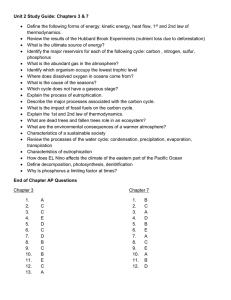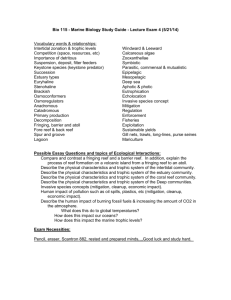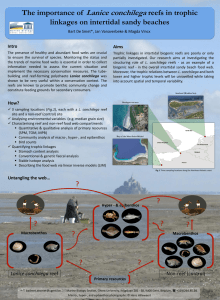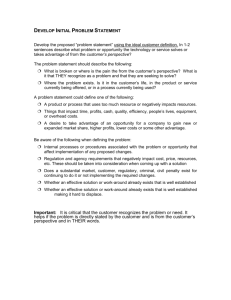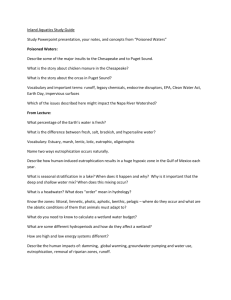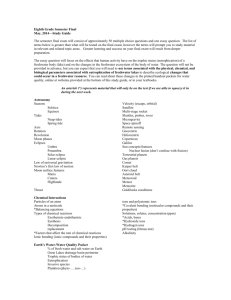IN CLASS EXAM – this vocab list will be provided for fill in the blank
advertisement
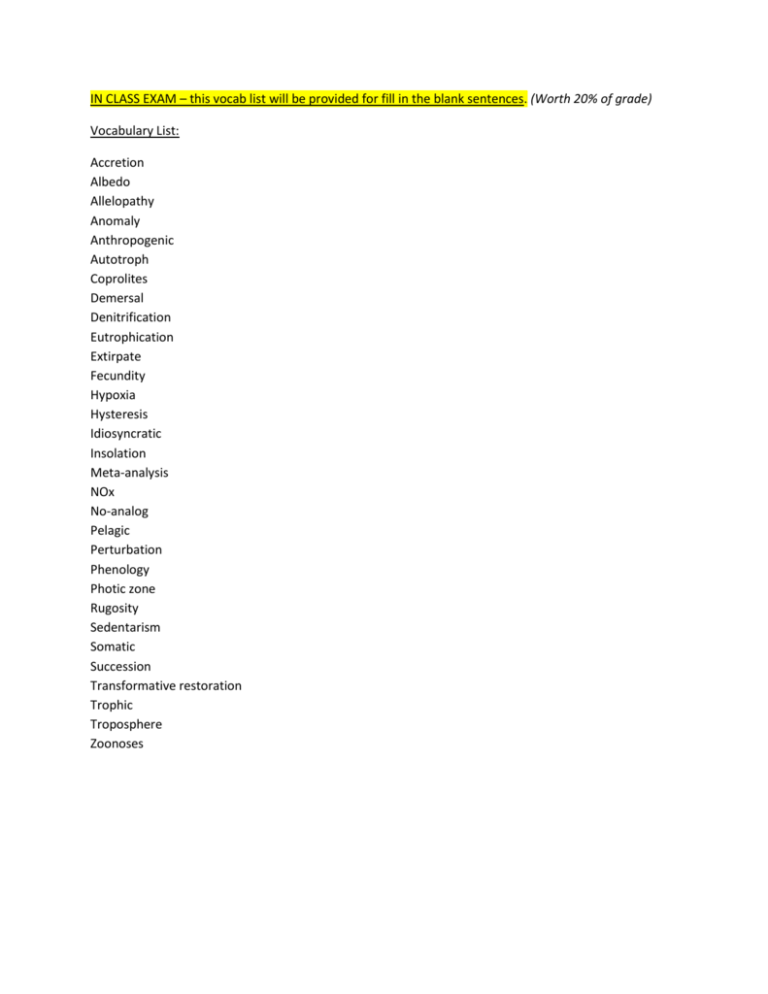
IN CLASS EXAM – this vocab list will be provided for fill in the blank sentences. (Worth 20% of grade) Vocabulary List: Accretion Albedo Allelopathy Anomaly Anthropogenic Autotroph Coprolites Demersal Denitrification Eutrophication Extirpate Fecundity Hypoxia Hysteresis Idiosyncratic Insolation Meta-analysis NOx No-analog Pelagic Perturbation Phenology Photic zone Rugosity Sedentarism Somatic Succession Transformative restoration Trophic Troposphere Zoonoses IN CLASS EXAM - Short Answer Questions. I will ask you half of the following short answer questions. (Worth 50% of grade) 1. Five major forms of anthropogenic global change have been identified by the Millenium Ecosystem Assessment, list and define four of them. 2. Four main lines of evidence show that current climate change is happening and is human caused, list and briefly describe two of them. 3. Evidence from sporormiella dung fungus in the US and Australia suggests that humans, not climate, caused the megafauna extinction. Explain why. 4. Loss of megafauna is often followed by increasing fire frequency. Explain why. 5. List and describe two ways that deforestation negatively affects ecosystems. 6. List and describe two examples of invasive species impacts on native species populations or on ecosystem-level function. 7. List and describe two ways that reactive Nitrogen (Nr) is created by human activity. 8. Describe the marketing strategy behind the use of the term ‘sound science’. How has this term and approach been used to stall policy action on climate change? 9. Describe two ways that climate change could enhance fire regimes. 10. Describe two ways that current livestock production creates greenhouse gases. 11. Describe one way that ocean acidification negatively affects coral reef systems. 12. Describe one way that warming ocean temperatures negatively affect coral reef systems. 13. Parmesan & Yohe’s Table 2 (above) refers to ‘changed as predicted’ and ‘changed opposite to prediction’. What are the predictions for distribution and for abundance that these terms refer to? 14. Give one example of an invasive plant trait that gives invasives an advantage with global change and explain why. 15. Explain how eutrophication can create dead zones. 16. Why are historically low-nitrogen ecosystems at higher risk of alteration from N deposition? 17. List and define three forms of diversity that can be found in an ecosystem. 18. Why does the theory of island biogeography predict that there will be fewer species on small islands far away from mainlands? 19. Define a trophic cascade and provide an example. 20. Describe two ways that land use/land cover change can also exacerbate climate change. TAKE EXAM ESSAYS – due during class time on 11/19. Each essay should be no longer than 1 page (double spaced), but can include citations on a separate page. Use specific examples, illustrations and/or facts drawn from lectures & readings to support your arguments. More specific details supporting your points will lead to a higher grade. Use citations to support facts where appropriate. (Worth 30% of grade) 1. Your friend tells you that he is switching to eating only grass-fed beef to ‘save the environment’. Using factual evidence of the environmental consequences of beef production, convince your friend that there are both positive and negative impacts of his choice. 2. Fragmentation reduces the size of available habitat. Why are small habitat patches likely to support fewer species? Provide an empirical example of the relationship between patch size and species richness to support your argument (hand drawn or a screen capture, properly attributed, are both acceptable).
